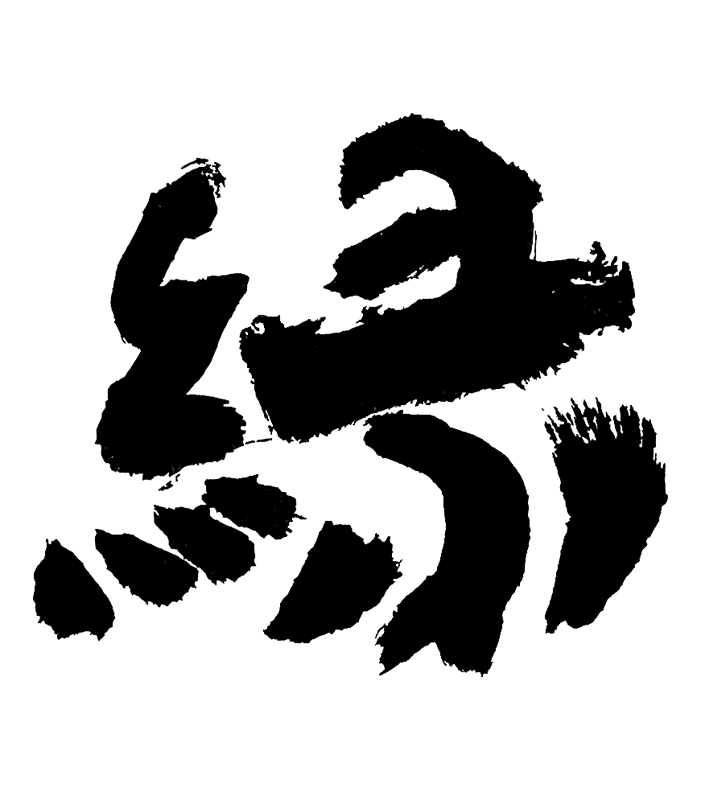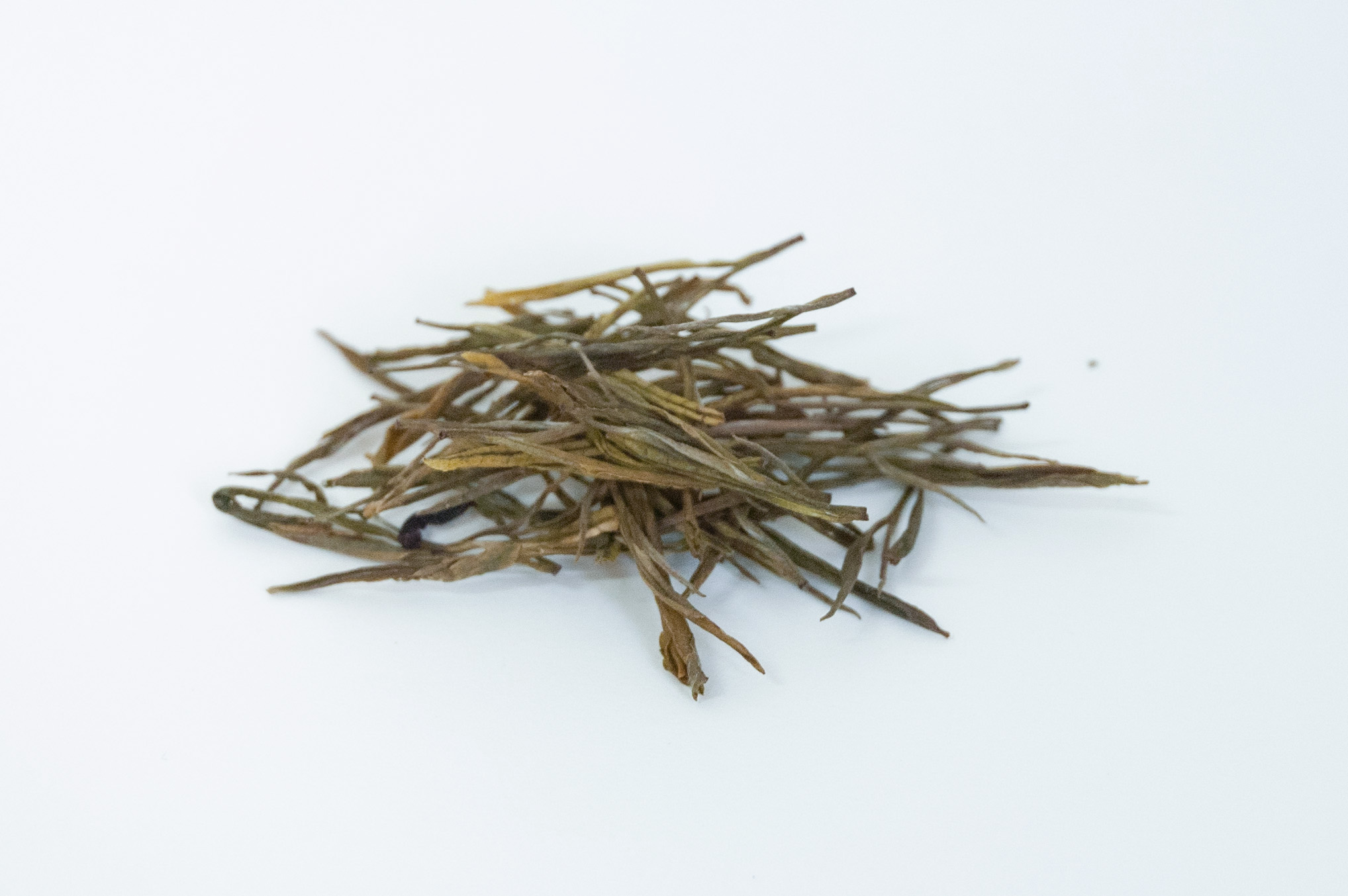GREEN TEA
Green tea is made from the fresh baby leaves of the tea tree. Its production process is relatively simple and preserves plenty of its original nutrient.
The very first green tea tree was discovered around the buddist/taoist temple of the foggy Mengding mountain in Sichuan. The monks grew and drank green tea to stay awake and healthy since hundreds of years.
Brewed green tea soup is translucent and reflects green light. Besides its freshness, it also has an undertone of chestnut and the smell of freshly opened pea pod.


HOW TO BREW:
AMOUNT:
In a 200ml tea pot, use 4g of tea leaves
TIME:
Pour in water gently aiming the wall of your tea pot
1st - 7th steep: brew for 3-5 seconds
7th - 10th steep: increase brewing time accordingly
TEMPERATURE
Use 90 to 95 celcius degree water
SUITABLE TEA WARE:
Clay Tea Pots
Gaiwan
Glas Pots
Gongbei
AMOUNT:
In a 200ml tea pot, use 4g of tea leaves
TIME:
Pour in water gently aiming the wall of your tea pot
1st - 7th steep: brew for 3-5 seconds
7th - 10th steep: increase brewing time accordingly
TEMPERATURE
Use 90 to 95 celcius degree water
SUITABLE TEA WARE:
Clay Tea Pots
Gaiwan
Glas Pots
Gongbei
Sweet Dew


Yulu green tea, known as "Sweet Dew," originates from Yaan, Sichuan, an area famous for its lush tea gardens and misty climate. This traditional Chinese green tea is crafted using tender spring leaves, renowned for their vibrant green color and fine, needle-like shape. The tea brews a clear, pale-green liquor with a smooth, umami-rich taste and a natural sweetness reminiscent of fresh dew. Subtle vegetal and floral notes enhance its refreshing and calming qualities. Celebrated for its balanced flavor and high antioxidant content, Yulu green tea is a testament to Sichuan’s ancient tea heritage and dedication to quality.
Fragrance:
Roasted nuts, cookies, pistachio, butter almond, grapefruit , velvet
Recommended occasion:
summer, and for people who's body has rather warm character
Technical data:
4g for 200 ml pot
can be brewed 6-10 times
Roasted nuts, cookies, pistachio, butter almond, grapefruit , velvet
Recommended occasion:
summer, and for people who's body has rather warm character
Technical data:
4g for 200 ml pot
can be brewed 6-10 times
Hairy Tips


Xinyang Maojian, or "Hairy Tip," is a premium green tea from Xinyang village in Henan province, renowned for its exceptional quality and centuries-old tea tradition. This tea is crafted from tender, young leaves with fine white tips, giving it its name. The infusion produces a bright, yellow-green liquor with a crisp, fresh aroma and a harmonious blend of vegetal, chestnut, and floral notes. Its brisk, slightly sweet taste and lingering aftertaste make it a favorite among tea enthusiasts. Grown in the cool, misty climate of Xinyang's mountainous terrain, Xinyang Maojian represents the pinnacle of Chinese green tea craftsmanship.
Depending on the time of the year (节气jieqi) it is picked up, it offers different tastes and qualities. Jieqi is the point marking one of the 24 divisions of the solar year in the traditional Chinese calendar. The type BEFORE RAIN are picked before the Guyu Jieqi. The type before Qingming are picked before the Qingming Jieqi. Qingming and Guyu happen usually at end of March or April.
fragrance:
freshly trimmed grassfield, wet bamboo, smoky farmer's kitchen
chinese spirituial character:
cold
recommended occasion:
summer, morning, lazy afternoon
Technical data:
4g for 200 ml pot
can be brewed 6-10 times
2022
绿茶,毛尖,河南,信阳
Green Tea, Hairy Tip, Henan, Xinyang
50g
绿茶,毛尖,河南,信阳
Green Tea, Hairy Tip, Henan, Xinyang
50g
Purple Bamboos


From the gentle slopes of Guzhu Mountain in Huzhou, Zhejiang, grows a tea once reserved for emperors: Zisuncha, the Purple Bamboo Green Tea. Its legend began in the Tang dynasty, when the Sage of Tea, Lu Yu, tasted its tender shoots and praised their fragrance to the imperial court. Thus it became a tribute tea, crafted beneath fluttering royal banners and carried across four thousand li to reach the palace before the Qingming feast.
Each spring, before the rains of Grain Rain, artisans hand-pick a single bud and leaf, tender and violet-tipped like newborn bamboo. The leaves, when steeped, unfurl like orchids, graceful, fragrant, alive with the breath of mountains and mist.
The soil of Guzhu, rich and dark beneath lush vegetation, gives this tea its pure sweetness and lingering floral tone. Its liquor glows pale and clear; its scent recalls the morning dew and distant blossoms. To sip Zisuncha is to taste history itself, the quiet elegance of an ancient empire, reborn in every leaf that leaves the branch.
In the spring of the Tang dynasty (610-907), when mist still clung to the valleys of Guzhu, tea pickers gathered the tender purple buds that would soon enchant the empire. It was said that Lu Yu, the revered Sage of Tea, once journeyed through the hills of Yixing and tasted a brew so pure that he urged its offering to the Emperor. Thus began the reign of Zisuncha as the tea of kings.
Each year, before the rains of Grain Rain, banners fluttered over Guzhu Mountain as thousands of artisans prepared the imperial tribute. The tea was wrapped in silk, the water sealed in silver flasks, and elegant boats carried the royal cargo across the mirrored waters of Taihu. Poets sang of its journey“Ten days to Chang’an, in time for the Emperor’s feast.”
fragrance:
pea pod, frosty morning, firewood, roasted nuts, distant flower
chinese spirituial character:
cold
recommended occasion:
summer, morning, lazy afternoon
Technical data:
4g for 200 ml pot
can be brewed 6-10 times
2024
绿茶,紫笋,浙江,湖州
50g
绿茶,紫笋,浙江,湖州
50g
THESE ARE OUR CURRENT AVAILABLE SELECTION OF TEA.
WE REFRESH OUR STOCK EVERY NOW AND THEN TO PROVIDE YOU ALWAYS WITH NEW TASTES AND EXPERIENCE.
WE REFRESH OUR STOCK EVERY NOW AND THEN TO PROVIDE YOU ALWAYS WITH NEW TASTES AND EXPERIENCE.